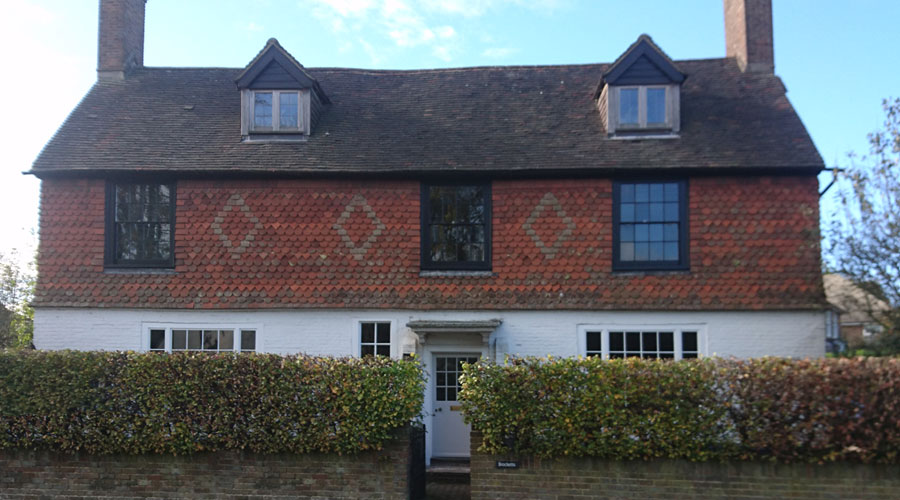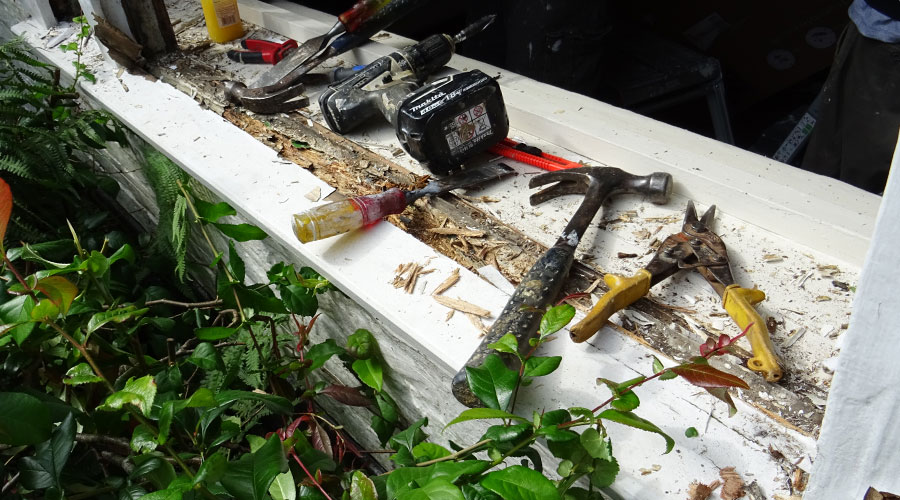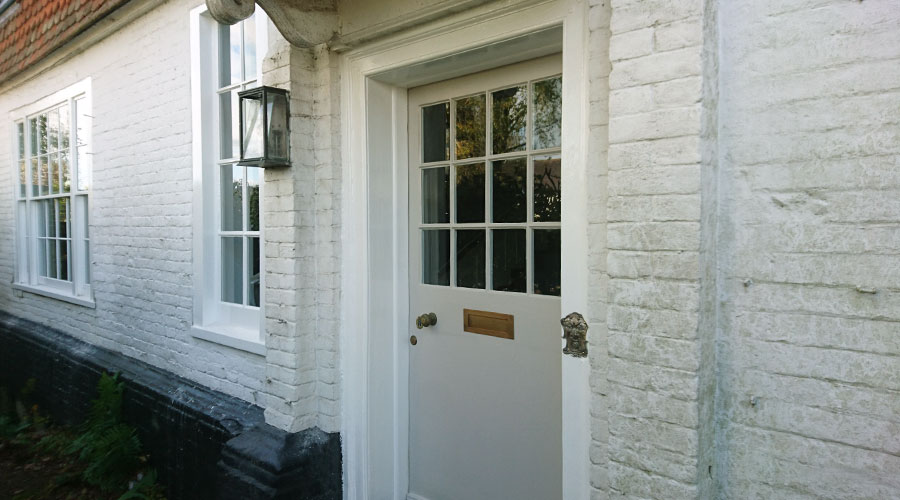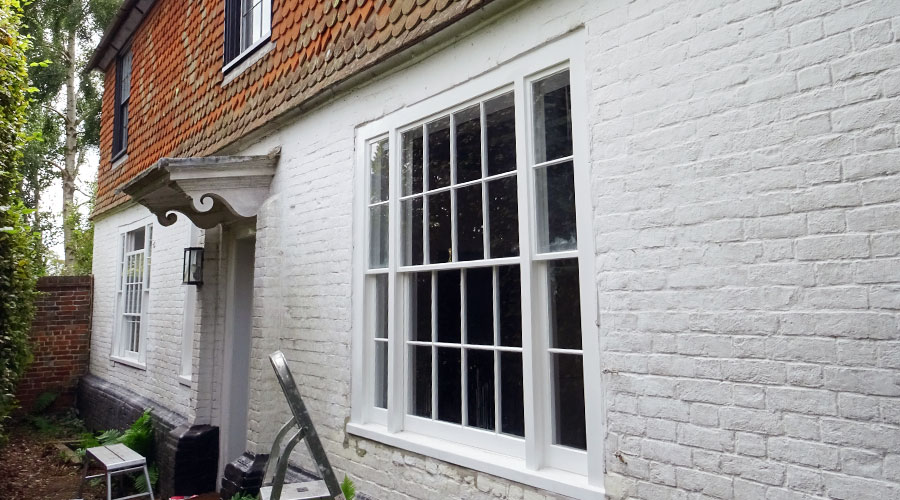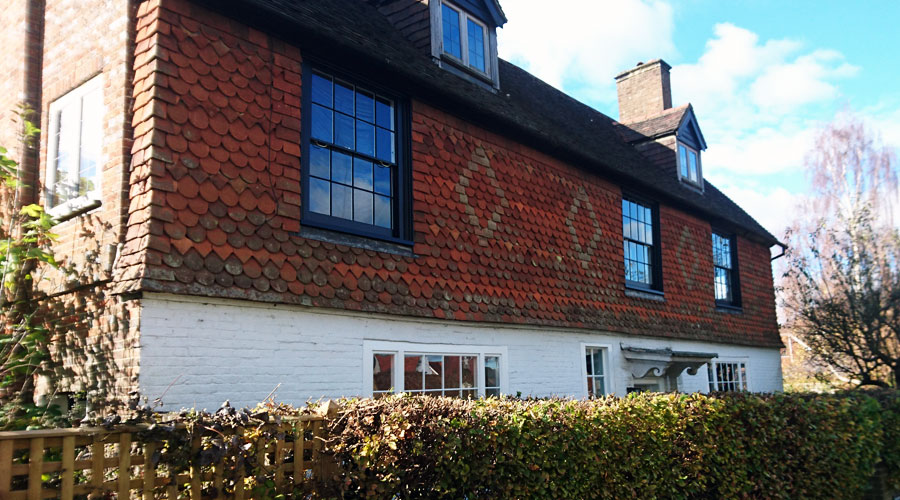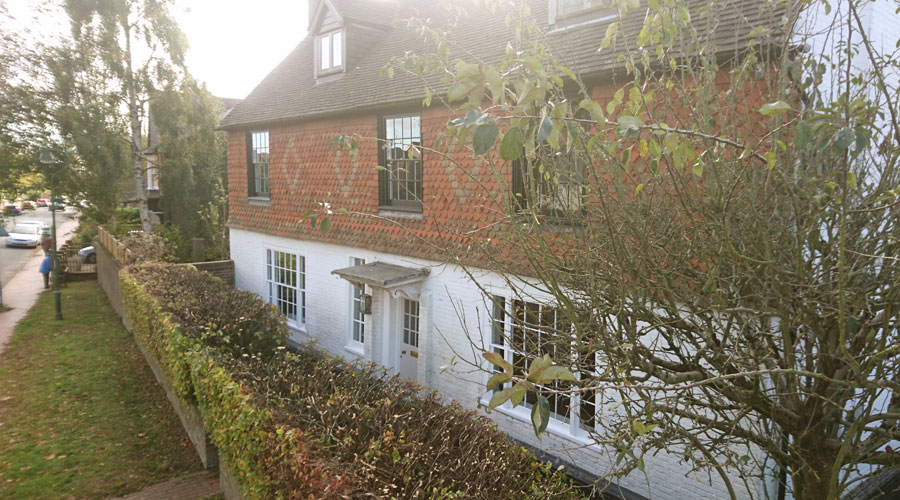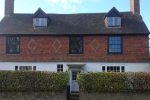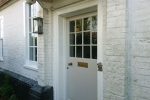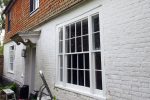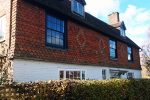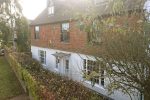Beautiful 17th century Grade II listed property in Cuckfield/ Haywards Heath, sash windows and door restored to its former glory.
Cuckfield is a very old town deep in history dating back to the Saxon period when the town was created from a clearing in the wood which means ending. When the Saxons were in Sussex it was divided into Family clans with 100 families pledging to keep the peace in the area. In the end William the Conqueror divided the kingdom into 6 vertical strips called rapes. Cuckfield was under the rape of Lewes which was owned by William De Varennes who built a hunting lodge and chapel there and called it Kukefield. He later give this away to the church as an endowment to the Cluniac priory of St Pancras at Lewes which he founded. His son confirmed the endowment, and this was the first written word of Cuckfield in a charter circa 1091.
The Prince regent regularly visited this town.
The town was a regular haunt of Brighton’s Prince regent, George IV often stopping of at the King’s Head Hotel, now a residential property. The first direct route to London from Cuckfield was in 1761 re-routing to Brighton. The first stage coach that used to carry the Prince Regent to Brighton was in 1780. This was known as the Brighthelmstone and Cuckield machine.
There were tollgates put around the area at Butlers Green and Whiteman’s Green in 1807 to try and get more tax out of people using this route. This was only for a short time while the new route (A23) was being built in 1825. There was also a proposed railway route in the planning, but the 2 families that owned the land around the area opposed this route. New land was acquired for the route and this went through a heath land called Muster Green/ Haywards Heath. This sealing the little market town’s fate to be a humble market town till this present day.
Beautiful 17th century windows repaired and restored to its original charm.
The building was built in 1726 and is a Grade II listed property on the old London Road/ Whiteman Hill corner. It had a fire in 2006 which took quite a hold on the property, but all the original features survived.
The windows were constructed of 2 Triparite windows at the front ground floor level and 3 eight over eight sash windows on the first floor of the property and a beautiful 19th century door.
The project started in June/ July 2018 and lasted 6 weeks. The windows on the ground and first floor had all the characteristics of a 17th century property. This included the frame of the building being constructed from ships beams decommissioned or shipwrecked in the area.
Why do woodworm love old houses.
These were always constructed of oak which can spell real trouble in the future with woodworm loving this building material. Oak is a beautiful wood and gets harder with age and has a higher density than steel with old timber. If there is woodworm present in the property than usually this has been brought in by birds. Especially in areas with lots of foliage around the property and dense gardens where habitat flourishes.
When this is apparent the first thing that we look at is the condition the sills are in. For example areas that have exit holes and the area comes away easily and looks rotten. The other is when the timber itself has started to divide at the face edge of the timber. This will cause the grain of the timber to form deep crevices were the nutrients have depleted through time.
When this happens, we will also look at the bottom of the window sill. We would see if there is wood that is just crumbling and very dry. This would start to breakaway very easily and come out in clumps but will just disintegrate. We would look at the timber and check for tiny trails were the wood is splitting. This usually has something called Hass which are like tiny small balls of wood were the woodworm has excreted this. This will always follow its path to where it is going for the centre of the timber. This is where the wood holds the acids that it loves to feed on at your expense.
Even the glass was replaced with the original Cylinder glass.
Since the whole frame was made of Oak there was quite a lot of rebuilding especially on the Triparite windows at the ground floor level. When you must replace the sills, the 2 centre mullions dividers must be taken out completely due to rot and getting the sills into place. This is usually done speedily with all the preparation being done before. This is so that the frame is apart for minimal time and there will be less movement externally.
Listed properties cannot even have different mouldings.
The sashes were in very good condition for its age and every single sash was to be restored with new parts being made to the exact moulding as the original. With woodworm present most of the external mouldings did have traces of worm. These did have to be remade to the same design as the originals since we have our own mould tooling machine. This machine is like a key cutting machine for industrial blades on a spindle moulder. With this machine we have no downtime since moulds must be made at tooling factories in Northampton. This always saves 1 week in production and this is usually done the next day and installed the day after.
Even the glass was replaced with the original Cylinder glass.
The glass in this property was originally Cylinder glass when the sashes were first installed. When we do our style of full refurbishment, restoration & full decoration than the glass can let the project down. This is due to the glass being overpainted over the years. Decorators in the past will scratch the glass with sandpaper. This gets bigger and bigger over time and before you know there is ¾ inch of scratches around the glass.
We have vast stocks of the original Cylinder and Crown glass that can match used in these refurbishments. With small panes of glass getting cut out of full sheets, this gives a continuous look on the sashes. The same methods were used when the glazing was originally installed, these are all things that our company looks at. Tiny little details are the most important when restoring a period property back to original features. If these methods aren’t used, how can the windows and doors be classed as restored to original. This is all to do with methods, skills and patience.
Thank you for your time reading this page on how we repair, restore and refurbish our windows to English Heritage standards.
Please feel free to call if you have a similar project and are looking to restore your property. The only way, the real English Heritage way.

